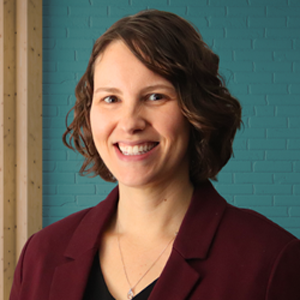The Diocese of Toronto is on the cusp of ushering in a new model of episcopal leadership, thanks in no small part to the efforts of a group of Anglicans.

Since February, the Episcopal Leadership Implementation Team (ELIT) has been hard at work on a plan to roll out new leadership structures in the diocese. Comprising a mix of lay people and clergy, and with the support of diocesan staff, the team is chaired by Susan Abell, ODT and the Rev. Canon Stephen Kirkegaard. “It’s almost like a stool – we want to get these positions mobilized and implemented, and there’s lay input, clergy and staff to make it happen. We need them all,” says Ms. Abell.
The team’s work builds on the efforts of the Episcopal Leadership Working Group, which reported on new options for leadership following Bishop Peter Fenty’s retirement. The group submitted its report in April 2021, and members of the diocese participated in several town hall meetings to share their thoughts.
After considering the recommendations and feedback, Bishop Andrew Asbil announced at Synod last fall that the diocese will move forward with three bishops supported by archdeacons, a new senior leadership position. He also tasked ELIT with developing the job description and making recommendations on how to fill these roles. “I think the name is our task – implementation. What we were really trying to figure it out is how we make this actually work,” says Canon Kirkegaard.
The team has been meeting every two weeks since February to do just that. It anticipates that there will be five archdeacons, each with oversight of particular deaneries. Two archdeacons will work with each suffragan bishop, and one will work with Bishop Asbil on the deaneries he oversees.

The work will be part-time, and the role will be open to both clergy and lay people. “I think Bishop Andrew’s vision is to build greater breadth and depth of leadership in the diocese. Some of the archdeacons might be recently retired people with administrative or managerial gifts,” says Canon Kirkegaard. “Some of them might be clergy in the middle zone of their ministry, and this would be a great way for them to continue to develop gifts and help shape the diocese, not just in the present but prepared for the future.”
While the team is aware that Anglicans might see the archdeacons as simply another layer in a hierarchy, Ms. Abell is clear that this extra support is needed to help bishops, parishes and clergy work together. “The goal is to enhance the leadership that’s available. It’s about expanding the capacity to lead, and to lead effectively. There’s no two ways about it – three bishops instead of five is a contraction,” she says. “It’s so regional deans, parishes and clergy can have more available to them, to help with the gap that was there to start with.”
Canon Kirkegaard echoes those thoughts. “They’re really there to help the bishops with their work, and of course as they help the bishops, they help all of us,” he says. “It’s not that the bishops are going to be less involved; this way, they’re going to be more effectively involved.”
The job description developed by ELIT outlines the archdeacons’ responsibilities under the bishops’ direction. Much of the work will be administrative tasks, including overseeing the work of area councils, holding deanery events and coordinating the work of regional deans and clergy. There may also be opportunities for archdeacons to represent the bishops at events like celebrations of new ministry in parishes. “If a parish is applying for grants, for example, the archdeacon would help them shape it up, and the bishop would see it when it’s ready to be signed. They’re there to help clergy who are looking to retirement, or a parish looking at a ministry plan,” says Ms. Abell.
Beyond helping with day-to-day tasks, the leadership offered by the archdeacons may also create opportunities for the bishops to expand their ministry in new ways. “They might have different projects or goals come into place, or interests and passions,” says Canon Kirkegaard. “A bishop might be taking a portfolio of ministries, and those portfolios might change. The archdeacons provide that territorial groundedness.”
The job description received final approval in late June, and everyone is now looking to the next steps of the process. ELIT has helped to craft a recruitment plan outlining how to find the right people to fill these roles. “We’ve been making lists of who needs to know about this or would be interested,” says Ms. Abell. “It’s developing the criteria for people who might be interested, how they’re going to show that and what’s expected of them.”
The diocese started inviting applications at the end of June, with a closing date of Sept. 8. “The idea is to get the word out throughout the summer so that we can start interviewing in the fall and the archdeacons are actually at work for the start of the new year,” says Canon Kirkegaard.
At that point, the process will be in the hands of the Bishop’s Office and the human resources department. For her part, Ms. Abell says she hopes this new model of leadership will continue to be a learning process for the diocese as it unfolds. “It’s important to use the time to look at it every so often and review it,” she says. “We can have intentional response, listen to how it’s going, what the real needs are.”
As the work of ELIT begins to wrap up, its co-chairs say they’re thankful for the gifts of their team members and the dedication of diocesan staff. “I’m impressed with the wealth of intelligence and resources we have,” says Canon Kirkegaard. “It’s good work and important work, and it’s definitely been a team effort.”



Ordinary people wield extraordinary power